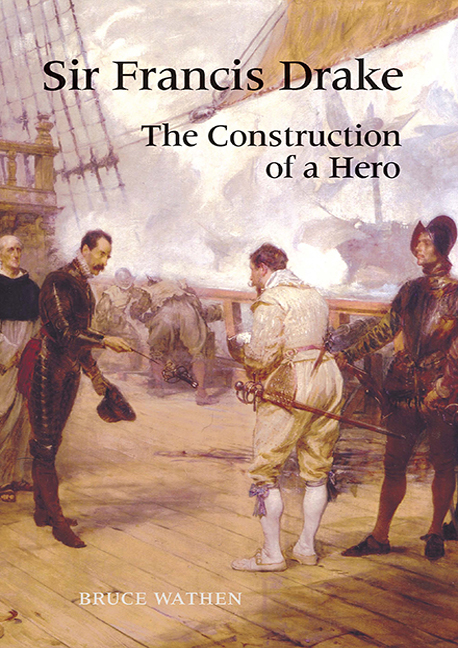Book contents
- Frontmatter
- Contents
- List of Illustrations
- Dedication
- Acknowledgements
- Introduction
- Chapter One Auxilio Divino
- Chapter Two ‘Sir Francis Drake Revived’
- Chapter Three ‘Behold the warrior dwindled to a beau’
- Chapter Four ‘Homage to Britannia’
- Chapter Five ‘Who the New World Bade British Thunders Shake?’
- Chapter Six ‘The Prose Epic of England’
- Chapter Seven ‘Mould him in bronze’
- Chapter Eight ‘Gun to Gun he'll Challenge us’
- Chapter Nine ‘A pirate, and a good one’
- Chapter Ten The Future
- Bibliography
- Index
Chapter Five - ‘Who the New World Bade British Thunders Shake?’
Published online by Cambridge University Press: 11 May 2017
- Frontmatter
- Contents
- List of Illustrations
- Dedication
- Acknowledgements
- Introduction
- Chapter One Auxilio Divino
- Chapter Two ‘Sir Francis Drake Revived’
- Chapter Three ‘Behold the warrior dwindled to a beau’
- Chapter Four ‘Homage to Britannia’
- Chapter Five ‘Who the New World Bade British Thunders Shake?’
- Chapter Six ‘The Prose Epic of England’
- Chapter Seven ‘Mould him in bronze’
- Chapter Eight ‘Gun to Gun he'll Challenge us’
- Chapter Nine ‘A pirate, and a good one’
- Chapter Ten The Future
- Bibliography
- Index
Summary
The gallant conduct of Drake in this expedition is known to every reader of history.
(Anna Eliza Bray, The Borders of the Tamar and Tavy, 1874)In the previous chapter it was suggested that knowledge of Sir Francis Drake during the first decades of the nineteenth century was becoming increasingly anecdotal. Versions of the famous mariner were disseminated from tourist guide-books as much as from the pages of naval histories. In 1834, however, the first full-length biography of Drake since the final edition of Robert Burton's The English Hero (1777) was published.This appeared in Robert Southey's The Lives of the British Admirals (1833–7). Southey had been commissioned to write the series of naval biographies for Dionysius Lardner who used the work as part of the famous Cabinet Cyclopaedia, published in 133 volumes between 1830 and 1849.
Southey's life of Drake is marked by the author's usual scholarly attention to detail and learned digressions, but this approach does not preclude an engagement with folk culture. Southey elaborates on the folk-tales that he first approached in a review of Lope de Vega's work several years before. The author accounts for the transposition of the Spanish version of Drake – a sorcerer in league with the devil – into English folk culture. According to Southey, the common people believed ‘that there was a white as well as a black art magic and that Drake, like Shakespeare's Prospero, and friars Bacon and Bungay, with whom they were better acquainted, employed the spirits under his command only in good works’. (Bacon and Bungay were characters from an early prose romance that was widely known.) Many of the tales are repeated from Southey's earlier review yet some contain slight variations, an indication of the malleable nature of folk narratives – even in the hands of a serious academic attempting to record examples of genuine lore. In this version of the warships tale, for example, the magical ships are combined with the game of bowls, as seen in the previous chapter.
- Type
- Chapter
- Information
- Sir Francis DrakeThe Construction of a Hero, pp. 85 - 102Publisher: Boydell & BrewerPrint publication year: 2009

